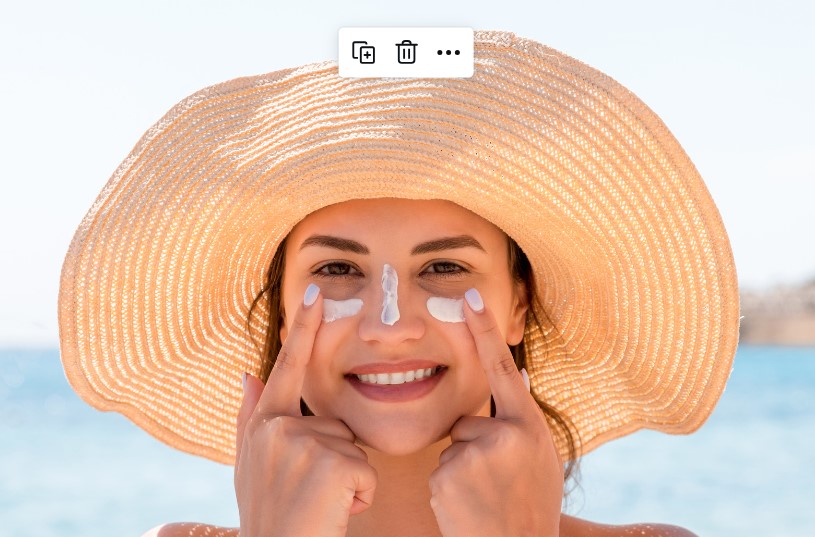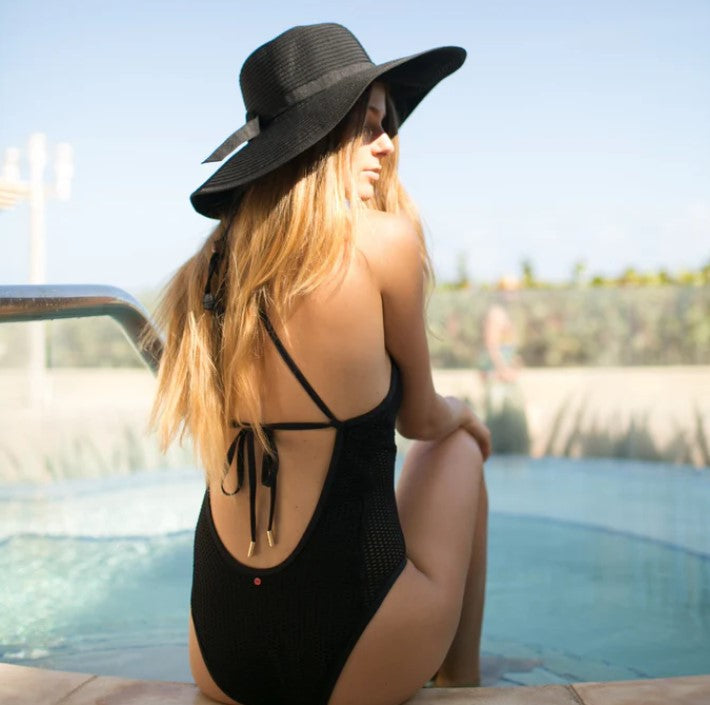
What does SPF 50 mean?
Sun protection factor (SPF) measures a sunscreen's ability to protect the skin from harmful UVB rays. The number 50 in SPF 50 indicates that it shields the skin 50 times better than unprotected skin. In other words, it would theoretically take 50 times longer for your skin to burn while wearing SPF 50 as opposed to no sunscreen.
Quick links:
Let's explore the benefits of SPF 50 sunscreens and how their high sun protection factor provides superior protection for your skin.
What is SPF?
SPF is a measurement of how effectively a sunscreen or other form of sun protection can protect human skin from the harmful effects of the sun’s ultraviolet (UV) rays.
SPF is a numerical rating that indicates the level of protection that a sunscreen product offers against UV radiation. Higher SPF will provide better protection against ultraviolet radiation.
UV radiation is divided into three main types of UV rays, based on wavelength:
- UVA: primarily associated with the premature aging of the skin (wrinkles, age spots, etc..). Contribute significantly to the development of skin cancers. The longest wavelength of the three types.
- UVB: responsible for causing sunburn, sun poisoning, and other types of skin damage. A significant contributor to the development of skin cancers. Shorter wavelength than UVA rays.
- UVC: least dangerous of the three types of UV rays. Absorbed almost entirely by the Earth’s atmosphere.
SPF 50 sunscreens
SPF 50 sunscreens provide a high level of protection against UV rays. They contain a combination of active ingredients, such as organic and inorganic filters, that work together to absorb, reflect, or scatter UV radiation.
These sunscreens often have a higher concentration of active ingredients than lower SPF products, which enables them to filter out a greater percentage of harmful UV rays.
SPF 50 sunscreens offer a significant level of protection against UV rays, particularly UVB rays, which are the primary cause of sunburn. An SPF 50 product filters out approximately 98% of UVB rays—only 1/50th (or 2%) of these rays reach the skin. This level of protection can reduce the risk of sunburn, skin damage, and premature aging caused by UV exposure.
What are the benefits of using SPF 50?
SPF 50 sunscreens provide a high level of protection against the sun's harmful UV rays. Here are the main benefits of using SPF 50 sunscreen products:
- Maximum protection against UVB radiation: SPF 50 sunscreens filter out about 98% of UVB radiation and offer a strong layer of protection for your skin.
- Reduced risk of skin damage: SPF 50 sunscreens shield your skin from UV lights and help prevent sunburn, premature aging, and other forms of skin damage.
- Decreased skin cancer risk: consistent use of high-SPF sunscreens, like SPF 50, can significantly lower your risk of skin cancer.
- Suitable for sensitive skin: many SPF 50 sunscreens contain physical blockers, such as titanium dioxide, which are gentle on sensitive skin.
- Extra protection for fair skin: people with fair skin or a history of skin cancer can benefit from the additional 1% of UVB protection provided by SPF 50 compared to SPF 30.
- Protection beyond sunburn: SPF 50 sunscreens may also help protect your skin from the damaging effects of blue light emitted by the sun and electronic devices.
- Maintains skin health: incorporating SPF 50 sunscreens into your daily skincare routine, along with other sun-protective measures, helps keep your skin healthy and protected.
How to choose the right SPF 50 sunscreen
Choose a sunscreen that fits your needs and preferences, and make sure to apply it as part of your daily sun protection routine for maximum protection against UV light and skin damage.
Here's what to consider when selecting an SPF 50 sunscreen product:
- Look for broad-spectrum sunscreen. Choose an SPF 50 sunscreen that offers broad-spectrum protection, because it protects against both UVA and UVB radiation.
- Consider your skin type. If you have sensitive skin, opt for a mineral-based SPF 50 sunscreen with physical blockers like titanium dioxide, which are less likely to cause skin irritation.
- Think about your activities. If you'll be swimming or sweating, choose a water-resistant SPF 50 sunscreen that will stay on your skin longer.
- Check the ingredients. Look for SPF 50 sunscreens with ingredients such as zinc oxide or avobenzone, which provide effective UV protection. Avoid sunscreens with harmful ingredients like oxybenzone.
- Choose the right formulation. SPF 50 sunscreens come in many formulas, such as lotions, sprays, and gels. Select a formulation that you find easy to apply and comfortable to wear.
- Consider your skin tone. Some SPF 50 sunscreens may leave a white cast on darker skin tones. Look for sunscreens specifically made for your skin tone to avoid this issue.
Note: If you have sensitive skin, do a patch test on a small skin area before applying sunscreen all over to check for any adverse reactions.
Proper application of SPF 50 sunscreens
Follow these steps to apply your sunscreen correctly:
- Use enough sunscreen to cover all exposed skin. A good rule of thumb is to use about 1 ounce (a shot glass full) for your entire body.
- Put on your SPF 50 sunscreen at least 15-30 minutes before going outdoors to allow the product to absorb into your skin and form a protective layer.
- Don't forget to apply sunscreen to often-missed spots such as the ears, neck, lips, back of the hands, and tops of the feet.
- Reapply your SPF 50 sunscreen every 2 hours, or more often if you're swimming, sweating heavily, or towel-drying, to maintain adequate protection.
- UV rays can cause skin damage any time of year, so make applying SPF 50 sunscreen a daily habit, regardless of the weather or season.
- While SPF 50 sunscreens provide a high level of protection, no sunscreen can block 100% of UV rays. Wear protective clothing, seek shade during peak UV hours, and wear a wide-brimmed hat for additional protection.
- Keep your sunscreen in a cool, dry place, as excessive heat or direct sunlight can break down the ingredients and reduce its effectiveness.
- Sunscreens typically have a shelf life of 2-3 years. Check the expiration date on your SPF 50 sunscreen and replace it if it has expired, as expired sunscreen may not provide adequate protection.
Myths about SPF 50 sunscreens
There are lots of misconceptions or “myths” going around about SPF 50 sunscreens that simply aren’t true. If you hear any of these, you’ll know better!
Higher SPF means longer protection time
One common misconception about SPF 50 sunscreens is that they protect for longer than lower SPF products. But the SPF value only indicates the level of protection against UVB radiation, not the duration of protection.
Regardless of the SPF number, all sunscreens should be reapplied every 2 hours or after swimming or excessive sweating to maintain adequate protection. The time of day, geographic location, and intensity of UV light can also affect how long your sunscreen remains effective.
SPF 50 offers 100% protection
While SPF 50 sunscreens do filter out about 98% of UVB radiation, no sunscreen can block 100% of UV light. Even with high-SPF sunscreens, some UV rays can still penetrate the skin, which is why it's essential to use other sun protection measures in addition to sunscreen.
It's also good to know that SPF only measures protection against UVB rays and doesn't indicate the level of protection against UVA rays, which can also cause skin damage and contribute to skin cancer risk.
SPF 50 is a substitute for other sun protection measures
You cannot rely solely on sunscreen. Even a high SPF is not enough to fully protect your skin from the damaging effects of UV light. In addition to applying SPF 50 sunscreen, it's crucial to practice other sun safety habits, such as wearing protective clothing, seeking shade during peak hours (typically 10 am to 4 pm), and wearing a wide-brimmed hat and sunglasses.
These measures work together with sunscreen to provide comprehensive protection against UV radiation and minimize the risk of skin damage and skin cancer.
Is SPF 50 good for the face?
SPF 50 is good for the face and offers a high level of protection against UVB rays, blocking approximately 98% of these rays. It is good for daily use, especially for individuals with fair skin, a history of skin cancer, or those who are exposed to intense sun.
SPF 50 sunscreens provide a higher level of protection and can be beneficial for those who spend extended periods outdoors or have skin that burns easily.
Pro tip: choose facial sunscreens formulated to be non-comedogenic (non-pore-clogging) and gentle on sensitive facial skin.
SPF 30 vs 50
The difference in UVB protection between SPF 30 and SPF 50 is relatively small, with SPF 50 offering only 1% more protection than SPF 30.
Here is a breakdown of key differences between SPF30 and SPF50.
|
Aspect |
SPF 30 |
SPF 50 |
|
UVB protection |
Blocks ~97% of UVB rays |
Blocks ~98% of UVB rays |
|
Perception and usage |
May be seen as providing sufficient protection |
Can give a false sense of security and lead to less frequent reapplication |
|
Cost and texture |
Often more affordable, better texture for some users |
More expensive, and may have a greasier or heavier feel |
|
Environmental and health concerns |
Lower concentrations of chemical UV filters |
Potentially higher concentrations of chemicals linked to health and environmental issues |
|
Regulatory perspectives |
Some countries cap the maximum SPF at 30 due to limited additional protection and potential adverse effects |
Some countries cap the maximum SPF at 50 |
Dermatologists generally recommend at least SPF 30 for sufficient protection. The choice depends on individual needs, skin type, and preferences, as well as considering other protective measures.
Choose SwimZip for sun protection
Even SPF 50 sunscreen is not enough for complete sun protection. Sun-protective swimwear is another layer of defense against sun exposure.
SwimZip offers sun-protective swimsuits and accessories for the whole family. Designed for water-based activities, this lightweight and quick-drying swimwear is made from ultraviolet protection factor (UPF) 50+ fabric that blocks 98% of UVA and UVB radiation.
In our broad collection, you will find everything from rash guards and swim dresses to one-piece swimsuits and sunsuits for kids. With SwimZip's stylish and functional options, you can enjoy peace of mind while making lasting memories in the sun.
If you want to learn more about the differences between UPF and SPF, take a look at our blog post.
SPF FAQ
Will I still tan with SPF 50?
You can still tan with SPF 50. Although SPF 50 blocks about 98% of UVB rays, a small percentage still penetrates the skin, allowing you to tan. It provides a safer way to achieve a tan with reduced risk of sunburn and skin damage.
If you’re going to tan, don’t do so during a high UV index. Read our guide on the best UV index for tanning to understand the dangers and learn how to tan more safely.
Does SPF 100 last longer?
SPF 100 does not necessarily last longer than lower SPFs. All sunscreens, regardless of SPF, should be reapplied every two hours or after swimming or sweating to maintain effectiveness. SPF 100 offers marginally better protection against sunburn but requires the same reapplication frequency.
Is too much SPF bad?
While higher SPF sunscreens provide better protection, they can contain higher concentrations of active ingredients. This can potentially increase the risk of skin irritation or cause adverse reactions in some individuals.
Also, very high SPF sunscreens can lead to a false sense of security, potentially resulting in longer sun exposure and less frequent reapplication.
Does SPF 50 clog pores?
Some sunscreen formulations, particularly those with thicker or greasier textures, can clog pores and contribute to acne or other skin issues. Look for non-comedogenic (non-pore-clogging) SPF 50 sunscreens specifically formulated for facial use.
Are chemical sunscreens good for your skin?
Chemical sunscreens can be good for the skin by providing effective UV protection. Some individuals with sensitive skin may experience irritation or allergic reactions to certain chemical filters. Select a sunscreen that suits your skin type and protection needs.
What is the best sun protection product?
The best sun protection involves a combination of broad-spectrum sunscreen (SPF 30 or higher) and sun-protective clothing and accessories (SwimZip has you covered). A multi-layered approach is most effective in reducing UV exposure.
How is SPF measured?
SPF is measured by testing a sunscreen's ability to prevent sunburn caused by UVB rays on human subjects under controlled conditions. The higher the SPF number, the greater the fraction of sunburn-producing ultraviolet light is blocked (to an extent).



Leave a comment
This site is protected by hCaptcha and the hCaptcha Privacy Policy and Terms of Service apply.